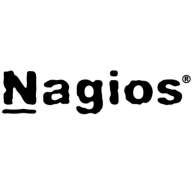

Nagios XI and Splunk AppDynamics both compete in the network and application performance monitoring category. AppDynamics generally takes the upper hand due to its comprehensive transaction tracing, deep dive monitoring capabilities, and operational dashboards, which suit complex IT environments.
Features: Nagios XI is known for open-source flexibility, extensive customization, and easy installation even on low-spec servers. It supports a wide range of network monitoring and provides plugin support for custom scripts. Splunk AppDynamics excels in application performance monitoring with comprehensive transaction tracing, operational dashboards, and application flow maps, offering robust insight into business transactions.
Room for Improvement: Nagios XI users highlight the need for easier plugin management, improved clustering, and better documentation. Its interface is perceived as outdated and complex in configuration. AppDynamics could enhance network monitoring and simplify its licensing model. Users also seek better agent management and improved integration with technologies like Kubernetes and cloud environments.
Ease of Deployment and Customer Service: Nagios XI offers straightforward deployment, especially on-premises, but may require significant customization knowledge. User reviews of customer service are mixed, with some noting high costs and time zone challenges. AppDynamics supports various cloud infrastructures and provides thorough technical support, despite being costly. Its detailed documentation aids deployment.
Pricing and ROI: Nagios XI presents good value, especially for smaller operations, with its open-source Core version costing nothing. The licensed version is competitively priced, offering good ROI. AppDynamics is considered a premium solution with high pricing and granular licensing, but its extensive features are seen as worth the investment for large deployments, providing significant ROI by reducing downtime.
The customer service and support are helpful and responsive.
If the user interface isn’t presenting data well, it becomes difficult to manage when scaling.
We have reached maximum capacity in our tier, and extending capacity has not been cost-effective from Splunk's perspective.
I did not find any Docker solution available with it, and a separate instance has to be installed.
It is very stable.
It is necessary to conduct appropriate testing before deploying them in production to prevent potential outages.
I can rate it nine out of ten.
Many tools have poor user interfaces, making them hard to manage and navigate.
The GUI could be improved. It's a bit too basic.
Splunk AppDynamics provides an end-to-end view of the application but misses the infrastructure part, which is crucial.
If AppDynamics could develop a means to monitor without an agent, it could significantly improve application performance and reduce potential problems.
We are using the free, open-source version.
The pricing for the Nagios XI product is good and better than other solutions.
Customers have to pay a premium price, however, they receive considerable value from the product.
All these solutions at the moment are cheap, but it is like paying for insurance; you pay insurance to avoid major damage.
Nagios XI simplifies our setup and reduces the time spent configuring monitoring tools.
The alerting system is very effective.
The feature that I appreciate in AppDynamics Browser Real-User Monitoring is the intuitive and user-friendly dynamic mapping it creates for workflows.
What I like the most about Splunk AppDynamics is the end-to-end observability for the application, along with traces.
The real-time feature provides me with insights into what's happening.


Nagios XI provides monitoring of all mission-critical infrastructure components, including applications, services, operating systems, network protocols, systems metrics, and network infrastructure. Third-party add-ons provide tools for monitoring virtually all in-house and external applications, services, and systems.
Nagios XI uses a powerful Core 4 monitoring engine that provides users with the highest levels of server monitoring performance. This high degree of performance enables nearly limitless scalability and monitoring powers.
With Nagios XI, stakeholders can check up on their infrastructure status using the role-based web interface. Sophisticated dashboards enable access to monitoring information and third-party data. Administrators can easily set up permissions so users can only access the infrastructure they are authorized to view.
Nagios XI Benefits and Features
Some of the benefits and top features of using Nagios XI include:
Reviews from Real Users
Nagios XI stands out among its competitors for a number of reasons. Several major ones are its integration options and monitoring abilities, as well as its alerting features.
David P., a senior DevOps engineer at EML Payments Ltd, writes, “We use Nagios as a network discovery tool. We use Nagios to maintain our uptime statistics and to monitor our services. It has allowed us to be much more sophisticated in our monitoring and alerting.”
An IT-OSS manager at a comms service provider notes, “Nagios XI has a custom API feature, and we can expose custom APIs for our integration. This is a great feature.”
Splunk AppDynamics enhances application performance monitoring with advanced diagnostics and real-time insights, offering seamless end-to-end transaction tracking and infrastructure visibility.
AppDynamics provides critical tools for businesses to analyze application behavior and performance. Through innovative features like transaction snapshot analysis and adaptable dashboards, users can quickly identify and address issues, ensuring high levels of system uptime and efficiency. It is designed to support complex environments including Kubernetes and AWS, enhancing user experience by detecting performance issues early. Despite needing improvements in network monitoring and integration, it remains a robust option for tracking application health.
What are the key features of AppDynamics?In industries like financial services and e-commerce, AppDynamics facilitates performance tracking across distributed systems, optimizing infrastructure to meet consumer demands. It excels in environments needing precise transaction monitoring and is pivotal in delivering high value and satisfaction.
We monitor all IT Infrastructure Monitoring reviews to prevent fraudulent reviews and keep review quality high. We do not post reviews by company employees or direct competitors. We validate each review for authenticity via cross-reference with LinkedIn, and personal follow-up with the reviewer when necessary.